App installieren
So wird die App in iOS installiert
Folge dem Video um zu sehen, wie unsere Website als Web-App auf dem Startbildschirm installiert werden kann.
Anmerkung: This feature may not be available in some browsers.
Du verwendest einen veralteten Browser. Es ist möglich, dass diese oder andere Websites nicht korrekt angezeigt werden.
Du solltest ein Upgrade durchführen oder einen alternativen Browser verwenden.
Du solltest ein Upgrade durchführen oder einen alternativen Browser verwenden.
khz
||||||||||
Schon sehr lange, war ~Streitpunkt damals.
Install über $Distribution Paketmanager oder selber bauen https://nightly.ardour.org/list.php. Gerne auch kaufen und/oder Spende.
Install über $Distribution Paketmanager oder selber bauen https://nightly.ardour.org/list.php. Gerne auch kaufen und/oder Spende.
khz
||||||||||
Beschreibung sollte bald im https://community.ardour.org/node auftauchen.[url:349b77tw]https://nightly.ardour.org/list.php[/url] schrieb:Status: OK Date: 2017-02-11 07:07:52 UTC
File: Ardour_64bit-5.6.0.run 107.31 MiB
Git: 5.6
>> https://community.ardour.org/node/14288
khz
||||||||||
khz
||||||||||
m1rk0
..
Ardour war und ist weiterhin Freie Software gemäß GPL. Der Entwickler macht nur sehr deutlich darauf aufmerksam, dass er für den Download der kompilierten Versionen Geld haben möchte. Einen dauerhafter Zugang zum entsprechenden Downloadbereich gibt es per PP-Abo, einzelne Downloads ab $1. Das ist ungewöhnlich, aber aus meiner Sicht nicht verwerflich. Es steht jedem frei, die Kompilate von woanders zu beziehen (z.B. über die Linux-Distribution) oder selber zu kompilieren.Seit wann kostet das denn etwas? Version 4 war doch vollkommen kostenfrei ohne Einschränkung, oder? Prinzipiell ok, aber dann werde ich erstmal bei 4 bleiben.
Mirko
khz
||||||||||
khz
||||||||||
khz
||||||||||
khz
||||||||||
Also kurz davor 
https://nightly.ardour.org/list.php@teh ~/moment $ Git: 6.0-pre0-34-g7d559de
https://nightly.ardour.org/list.php@teh ~/moment $ Git: 6.0-pre0-34-g7d559de
\o/
Zuletzt bearbeitet:
telefonhoerer
||||||||||
lad mal hoch was du damit aufgenommen hast
P
ps4074iclr
Guest
lad mal hoch was du damit aufgenommen hast
Entweder ich versteh was nicht, oder du.
khz hat geschrieben, dass es noch nicht ganz fertig ist.
Oder benutzt er sowieso die Developer-Version und macht täglich Tracks damit?
telefonhoerer
||||||||||
@khz ich besitze alle LP's von dir ,sowie die teuer erworbenen 1"-Mastertapes, mein iphone ist voll von songs aus deinem Soundcloud-Account,
wenn Du sagst Ardour 6 ist released .....ist das mein Bibel.
ich hab Ardour gleich neu emerged und werde damit die Projekct Größenwahn Tracks remastern, kannst gerne vorbeikommen und mir helfen
wenn Du sagst Ardour 6 ist released .....ist das mein Bibel.
ich hab Ardour gleich neu emerged und werde damit die Projekct Größenwahn Tracks remastern, kannst gerne vorbeikommen und mir helfen
marco93
Shnitzled in the Negev
Hi,
wie erzeugt in Beats in Ardour? Für Kick, etc. jeweils eine Spur anlegen und dann gruppieren? Möglichkeit wäre ja auch Hydrogen zu benutzen, aber wie sähe dass dann aus? Als Wav exportieren? Am besten wäre die einzelnen Spuren von Hydrogen irgendwie in Ardour zu bekommen...
wie erzeugt in Beats in Ardour? Für Kick, etc. jeweils eine Spur anlegen und dann gruppieren? Möglichkeit wäre ja auch Hydrogen zu benutzen, aber wie sähe dass dann aus? Als Wav exportieren? Am besten wäre die einzelnen Spuren von Hydrogen irgendwie in Ardour zu bekommen...
khz
||||||||||
Einzelspuren der Drum(s) in Gruppe "Drums".
Einen "Drum VCA" zuweisen.
In "Drum Bus" routen. (Das Mixbus Manual auch gut.)
Hydrogen hat auch Multi Outs. Evt. von Ardour (MIDI) anspielen.
Introducing the AVL Drumkits LV2 Plugin!
Ansehen: https://www.youtube.com/watch?v=4idMZTxTaY8
Einen "Drum VCA" zuweisen.
In "Drum Bus" routen. (Das Mixbus Manual auch gut.)
Hydrogen hat auch Multi Outs. Evt. von Ardour (MIDI) anspielen.
Introducing the AVL Drumkits LV2 Plugin!
Ansehen: https://www.youtube.com/watch?v=4idMZTxTaY8
Zuletzt bearbeitet:
marco93
Shnitzled in the Negev
Danke für den Tipp mit dem Manual. Angenommen ich habe Kick und Snare. Die kann ich dann zu einer Gruppe hinzufügen und über "Neuer Aux-Send" einem Bus zuweisen. Dort dann Effekte rein, etc. Richtig?
Klick ich mit der rechten Maustaste auf die Group-Bar hat der Button >Subgruppen-Bus hinzufügen< keine Funktion ... geht das bei euch?
http://manual.ardour.org/signal-routing/subgrouping/
Klick ich mit der rechten Maustaste auf die Group-Bar hat der Button >Subgruppen-Bus hinzufügen< keine Funktion ... geht das bei euch?
http://manual.ardour.org/signal-routing/subgrouping/
khz
||||||||||
Bus-Gruppen mit Ardour
Ansehen: https://youtu.be/OydrFP4SHxs?t=2m44s
Gruppe anlegen bzw. Spuren zuweisen.
Im Editor/Mixer mit Rechtsklick auf das "Reiter Tab" der "Drum Gruppe" klicken und dann auf "Subgruppen-Bus hinzufügen".
Im Mixer gibt es auf der linken unteren Seite ein Feld wo deine Gruppen aufgelistet sind. Da kann man auch Subgruppen-Bus hinzufügen.
Unterschied zwischen: Aux sends und Subgroups:
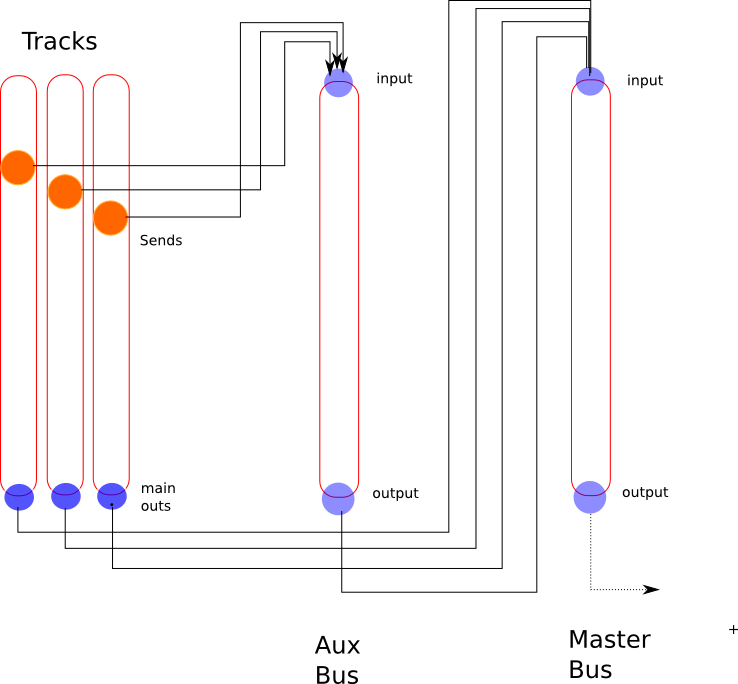
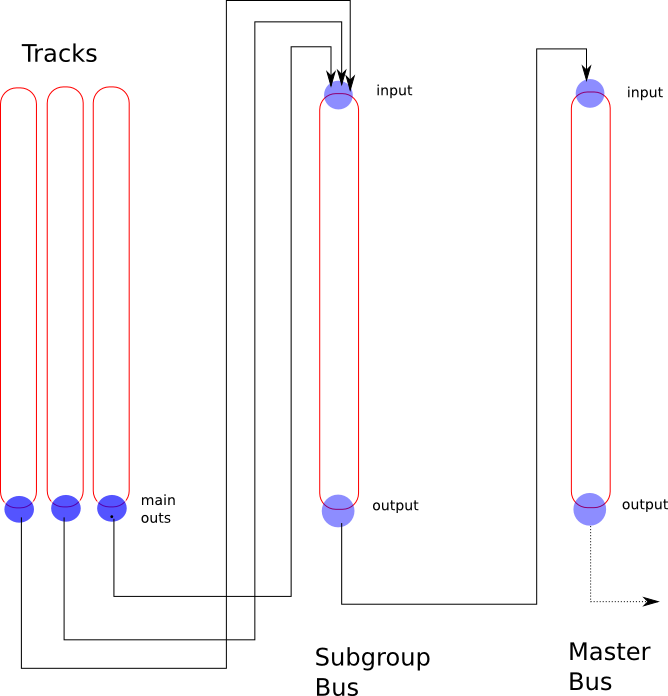
Aus Ardour Manual - Comparing Aux Sends and Subgroups
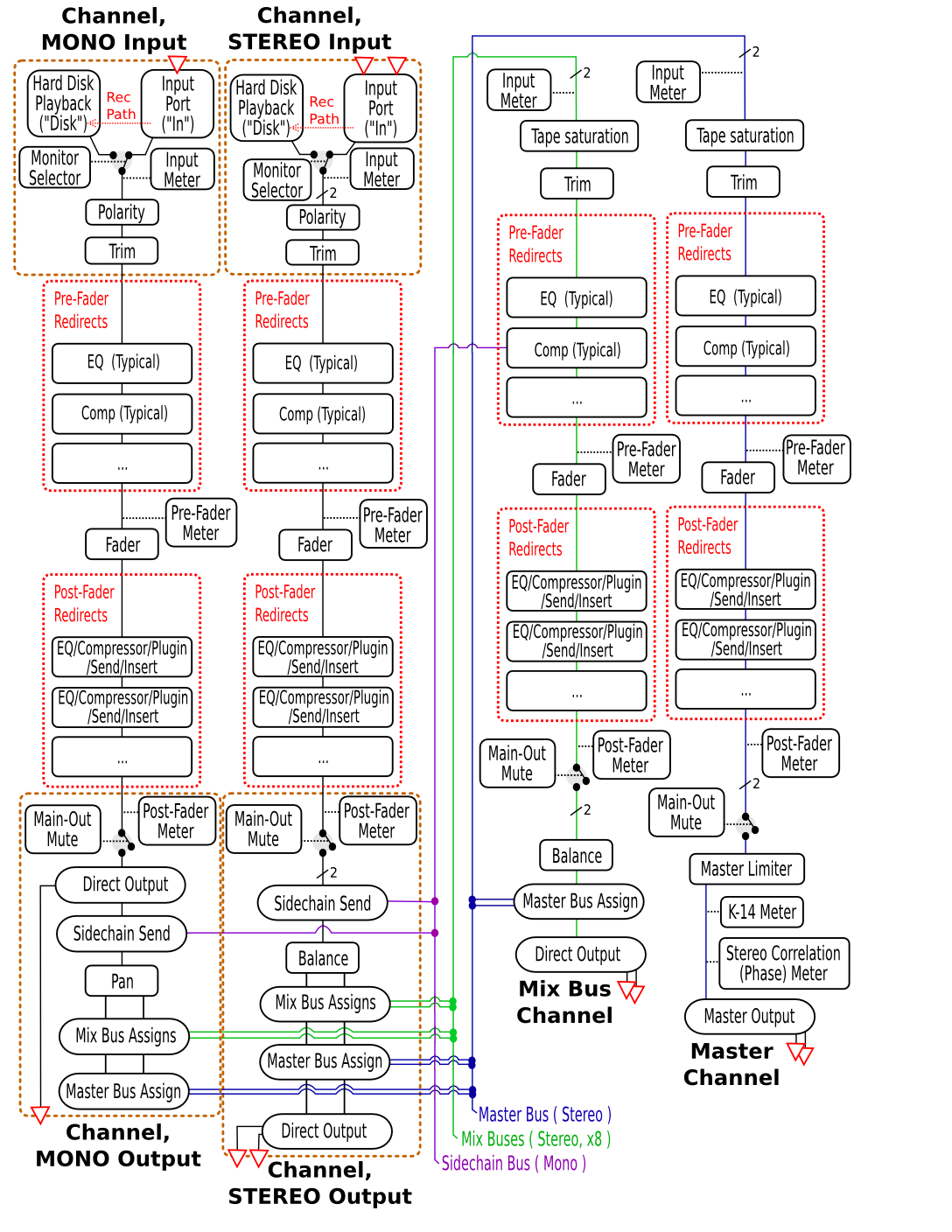
Von: Mixbus32C Manual - Signal Flow; in Ardour: Ardour Manual - Signal Flow
Optional noch für alle Spuren die sich in der Gruppe befinden einen Ardour Manual - Drum VCA; Mixbus32C Manual - VCA Strip erstellen und zuweisen.
ardour synth drum midi record
ardour avl drum midi record
Von: Ardour Forum - MIDI Drum recording
Du kannst unter neues "Instrument" z B. "Black Pearl Multi" auswählen.
Ansehen: https://youtu.be/OydrFP4SHxs?t=2m44s
Gruppe anlegen bzw. Spuren zuweisen.
Im Editor/Mixer mit Rechtsklick auf das "Reiter Tab" der "Drum Gruppe" klicken und dann auf "Subgruppen-Bus hinzufügen".
Im Mixer gibt es auf der linken unteren Seite ein Feld wo deine Gruppen aufgelistet sind. Da kann man auch Subgruppen-Bus hinzufügen.
Unterschied zwischen: Aux sends und Subgroups:
- Aux sends:

- Subgroups:

Aus Ardour Manual - Comparing Aux Sends and Subgroups

Von: Mixbus32C Manual - Signal Flow; in Ardour: Ardour Manual - Signal Flow
Optional noch für alle Spuren die sich in der Gruppe befinden einen Ardour Manual - Drum VCA; Mixbus32C Manual - VCA Strip erstellen und zuweisen.
ardour synth drum midi record
ardour avl drum midi record
Von: Ardour Forum - MIDI Drum recording
Du kannst unter neues "Instrument" z B. "Black Pearl Multi" auswählen.
Zuletzt bearbeitet:
khz
||||||||||
Subgruppen als auch VCA ist Audio. Durchschnittsalter der Forenteilnehmer  :like: 60 Jahre altes Mischpult.
:like: 60 Jahre altes Mischpult.
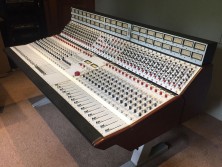
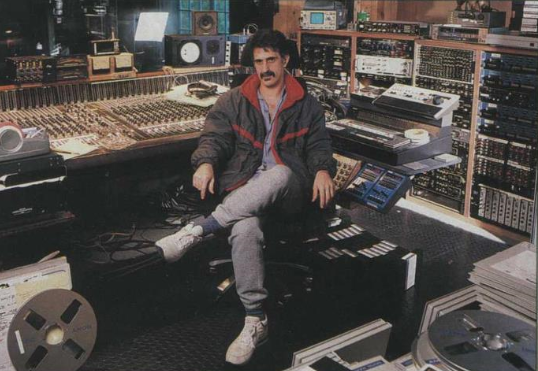
In aktueller Version von Ardour soll MIDI ~brauchbar und ~stabil sein.
Ich nutze entweder gar keinen Sequencer oder HW, daher kA wie das Drum Beats Programierung in Arour ist, ~Mausgeschubse.


In aktueller Version von Ardour soll MIDI ~brauchbar und ~stabil sein.
Ich nutze entweder gar keinen Sequencer oder HW, daher kA wie das Drum Beats Programierung in Arour ist, ~Mausgeschubse.
Zuletzt bearbeitet:
khz
||||||||||
Mixbus ist ja Ardour. Ich finde deren Manual ~besser geschrieben, daher diese Links:
Mixbus Manual - Virtual Instruments
bzw. generell MIDI:
Mixbus Manual - Using MIDI
Mixbus Manual - Virtual Instruments
bzw. generell MIDI:
Mixbus Manual - Using MIDI
khz
||||||||||
https://community.ardour.org/node/15460What's Going On With Ardour?
It's Christmas 2017, and many people in the Ardour community and beyond may be wondering what is happening with Ardour right now. It's been several months since our last release, and there's no word on what is going on.
Between now and the (Gregorian) New Year, I'll be posting 3 articles about where Ardour has been, where we are heading and the financial aspects of the project.
For now, I will just note that we're mostly focused on really substantive (wide-ranging, deep and difficult) internal architectural changes that will (over time) make a lot of other stuff possible. There's absolutely no timeline for the next release at this point, and the work is hard enough that in general we're trying not to get diverted by bug reports and small feature requests.
Stay tuned for a history and a glimpse of where 2018 might take Ardour ...
- Where Ardour has been:
https://community.ardour.org/node/15462Almost Ready to Leave Home
Ardour began its life 18 years ago, in late December 1999. The story has been told many times in many different places, but the gist of it is that I wanted a program something like ProTools that would run on Linux, and none existed. I decided to write one. I had little idea what would be involved, of course. Which was probably for the best, otherwise I would likely not have started.
Recently, while clearing out old paperwork from my office, I found myself reading some old issues (2001-2003) of the generally excellent magazine, Sound on Sound.They give a pretty good idea of the state of DAW technology at that time as well as other stuff like sampling, sequencing and so forth, which at that time were somewhat separate from the core functionality being offered by DAWs.
It occured to me that Ardour has actually managed to reach the goals I set out back in 2000. It is a capable DAW capable of doing the vast majority of the things people were doing with this kind of program around the start of a new millenium. Not suprisingly, that's still a substantive part of what people are doing now with DAWs in general even at the end of 2017.
There are some things that we were actually doing long before other DAWs. Anywhere-to-anywhere routing is something we more or less pioneered, and has now become common. A truly flexible mixer architecture (whose flexibility is sometimes its downfall). Support for different solo models. Even today press releases for new versions of several proprietary DAWs will regularly mention things that Ardour has done for more than a decade. Oh well - the point is not to gloat over this kind of thing, since there are plenty of things that Ardour doesn't do. The point is to note that the initial goals have largely been satisfied.
In fact, they've been more than satisfied, because Ardour also became a truly multi-platform project (running on Linux, MacOS (nee OS X) and Windows. It also gained some level of support for MIDI workflow, not to mention the video timeline.
Ardour has also served as the basis for two or three "commercial" projects - Harrison Mixbus, Waves Tracks Live (and the likely short-lived Radar Session software). We've somehow developed a way to raise significant (though not substantial) income every month, despite the program remaining under the GPL license. Nobody needs to pay for Ardour, but lots and lots of people choose to do so. These are no small accomplishments.
There were other, somewhat meta-goals too. I wanted Ardour to serve as an example (not a template or a toolbox) for other people to learn how to write a DAW. I doubted that we'd get everything right, but that at least compared to the situation in 1999, when there was no open source DAW suitable for use as a ProTools-like system, Ardour has truly fulfilled this idea. I suspect that Justin Frankel didn't take a lot of inspiration from Ardour's source code when he started writing Reaper, but it was fun having him on our IRC channels for a while as he got started with that project. Ardour has also attracted the involvement of nearly 50 skilled developers over the years, a dozen or so of whom have played major roles in the design and implementation of the program. A couple have even gone on full time paid jobs working on audio technology.
It wouldn't be completely unreasonable, after 18 years of development and having reached the level of features that Ardour now has, to consider it done, at least in some senses. It is true that we have a huge list of 2000+ bugs that remain open in our bug tracker. Our MIDI workflow has lots to complain about, and there are some glaring software design errors that users can see if they insist on trying some not-that-crazy stuff (e.g. working on MIDI versions of Phillip Glass pieces).
Still - people use it. Somebody starts Ardour up somewhere in the world at least every 3 minutes or so. Some of our users rave about in comparison to other DAWs. You can make albums with Ardour. Record live gigs. Basically do all the things I imagined back in December 1999.
But are we done? Absolutely not. In my next post, I'll outline some of the directions that I personally imagine Ardour going in during 2018 and beyond.
- Where we are heading:
- Comming soon - - The financial aspects of the project:
- Comming soon -
>> https://www.deepl.com/translate <<
Zuletzt bearbeitet:
khz
||||||||||
Interview with Paul Davis of Ardour about Ardour 6.0 and more
http://admiralbumblebee.com/music/2...-Davis-of-Ardour-about-Ardour-6-and-more.html
http://admiralbumblebee.com/music/2...-Davis-of-Ardour-about-Ardour-6-and-more.html
khz
||||||||||
GUI sieht gleich aus.
Soweit ich es verstehe optimieren/modalisieren/erweitern Paul mit x42 (2. fester Programmierer (~von Mixbus)) den Code neu. Vorher konnte Paul ja größtenteils alleine rumfrickeln, nun Feedback von x42, Veränderung (auch Firma MB).
Also auch z.B. MIDI wird besser. Evt. noch nicht sofort neue Funktionen, aber leicht einbaubarer für die Zukunft und geplant.
In Bereich Zuverlässigkeit/RT/GUI auf jeden Fall nice, aktueller Code.
Zeile 552367278
Soweit ich es verstehe optimieren/modalisieren/erweitern Paul mit x42 (2. fester Programmierer (~von Mixbus)) den Code neu. Vorher konnte Paul ja größtenteils alleine rumfrickeln, nun Feedback von x42, Veränderung (auch Firma MB).
Also auch z.B. MIDI wird besser. Evt. noch nicht sofort neue Funktionen, aber leicht einbaubarer für die Zukunft und geplant.
In Bereich Zuverlässigkeit/RT/GUI auf jeden Fall nice, aktueller Code.
Zeile 552367278
Zuletzt bearbeitet:
khz
||||||||||
Podcast 214: Paul Davis (Ardour)
Ansehen: https://artmusictech.libsyn.com/podcast-214-paul-davis-ardour
Ansehen: https://artmusictech.libsyn.com/podcast-214-paul-davis-ardour
khz
||||||||||
kA, it is ready when it's ready 
Wow schon fast ein Jahr. ^^
marco93
Shnitzled in the Negev
und wann kommt jetzt endlich 6.0?
Ich hoffe noch dieses Jahr ??
marco93
Shnitzled in the Negev
Ich blick das mit den Regionen nicht bei Ardour. Hier hab ich mal einen kleinen Beat gebastelt aus Einzelsamples und die Tracks combined.
1. Gibt es eine Möglichkeit die Lücken vorne und hinten zu schließen? Ziehen geht ja nicht, man kann die Region nur kleiner machen, aber nicht größer.
2. Gibt es eine Möglichkeit die Tracks zu linken? Wenn 1. geht, dann kann ich danit leben, aber so ist das irgendwie scheisse.
Thanks
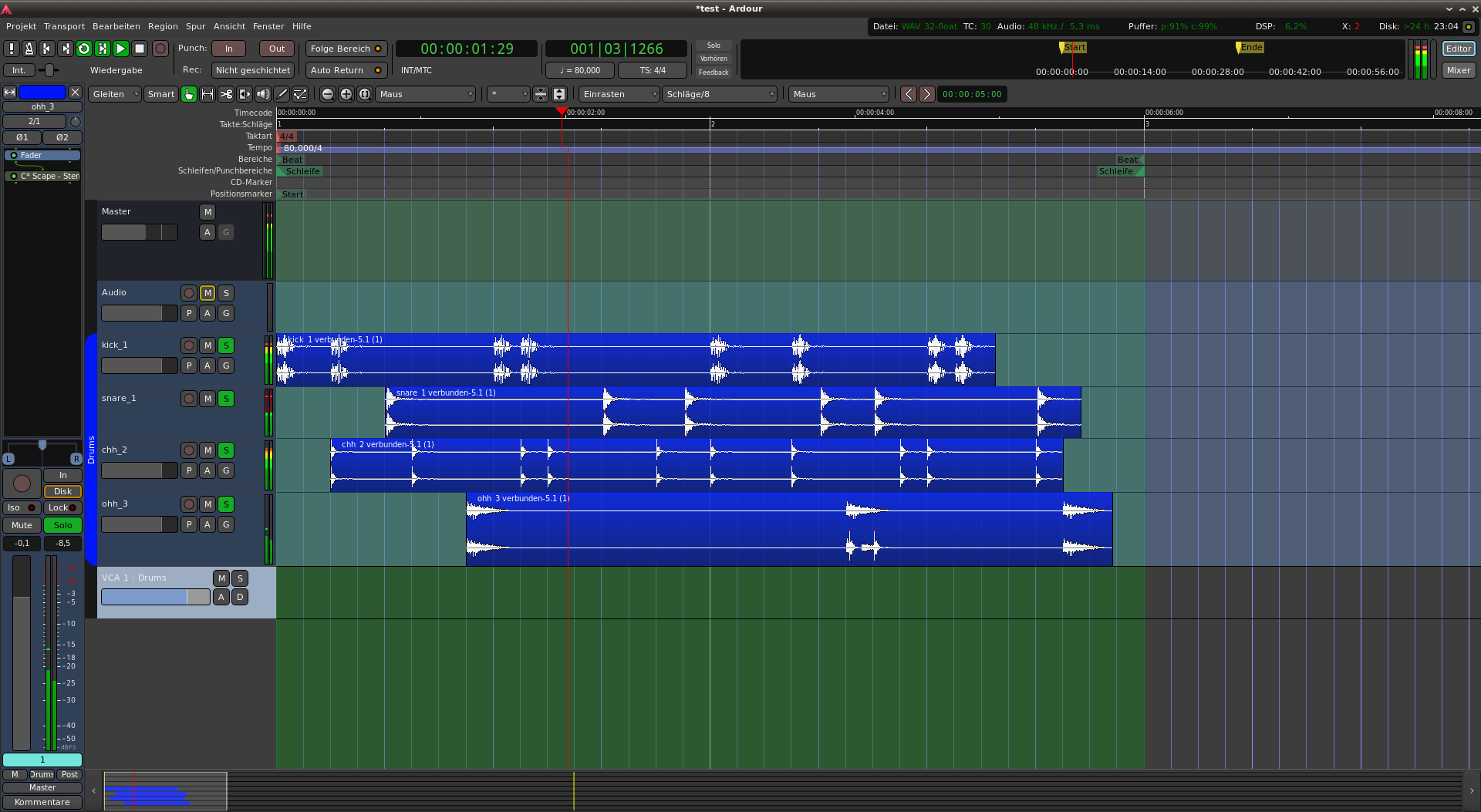
1. Gibt es eine Möglichkeit die Lücken vorne und hinten zu schließen? Ziehen geht ja nicht, man kann die Region nur kleiner machen, aber nicht größer.
2. Gibt es eine Möglichkeit die Tracks zu linken? Wenn 1. geht, dann kann ich danit leben, aber so ist das irgendwie scheisse.
Thanks

Similar threads
- Antworten
- 0
- Aufrufe
- 213
- Antworten
- 3
- Aufrufe
- 183
Neueste Beiträge
-

-
-
Majella Implexus - Buchla-Oszillatoren in einem Desktop-Synth
- Letzter: Feinstrom
-

-

-

News
-
Rainy Day (bisher Otem Rellik) Hailström - Sampler & Drummachine
- Gestartet von Moogulator
- Antworten: 1
-
-
SequencerTalk #206 Synthesizer Entwicklung über die Zeit, Rückschritte und Fortschritte und Neues
- Gestartet von Moogulator
- Antworten: 1
-
Knobula Pianophonic - Ein Piano für Leute die keine Pianos brauchen - Eurorack + MIDI!
- Gestartet von Moogulator
- Antworten: 1
-
9-11.5.2024, Fischbach bei Idar Oberstein, Modular Meeting Happy Knobbing 2024
- Gestartet von Moogulator
- Antworten: 0
-
-